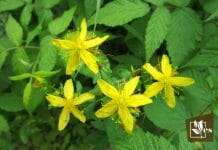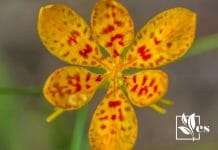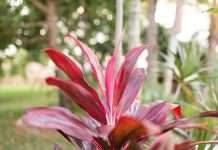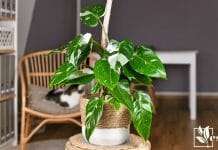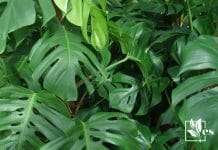Aglaonema vs dieffenbachia perplexes many gardeners as both of these plants of the Araceae family have very similar attributes. If you are one of them, then this article will remove the confusion from your mind.
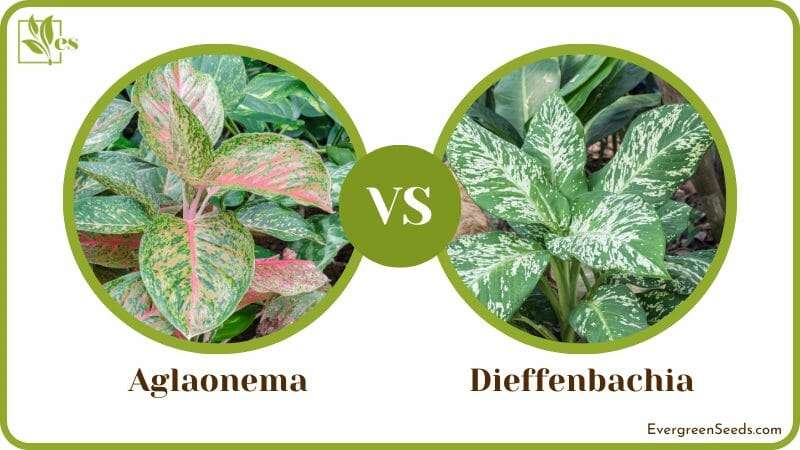
Our experts will give you in-depth details that tell you how you can easily differentiate between the two popular tropical foliage plants. Without further ado, let’s jump right in!
JUMP TO TOPIC
Quick Overview
Here is a table of comparison for a quick overview between the two plants.
| Aglaonema | Dieffenbachia | |
| Leaves | Silvery pattern with 5 to 8 main veins | White, cream, or yellow pattern with 20 to 30 veins |
| Environment | Can grow in low light | Bright but not direct sunlight |
| Soil | Loose soil that should be slightly moist | Consistently moist, well-drained soil |
| Care | Do not require over the top nourishment | Requires a liquid or water-soluble fertilizer more frequently |
| Propagation | A new plant can be generated with stem cuttings | A new plant can be generated from the stem as well as root cuttings |
| Growth | Grows into short and bushy plants | Has tall, cane-like stems |
| Water | Requires once a week watering | More frequent watering |
What Is the Difference Between Aglaonema and Dieffenbachia?
The main difference between aglaonema and dieffenbachia is that aglaonema leaves have a silvery pattern while dieffenbachia leaves have white, cream, or yellow patterns with 20 to 30 veins. These plants also differ in the environment they grow in.
Continue reading to know more about their differences and care requirements.
– Leaves
The aglaonema has long, oval-shaped leaves with a silvery pattern on their surface. In comparison, dieffenbachia leaves are wider. They are oval and come with a white, cream or yellow pattern unlike the silvery aglaonema.
– Lateral Veins
Aglaonema may look like plants similar to dieffenbachia, but it has plenty of more noticeable differences. The plant generally comes with five to eight main veins.
On the other hand, the dieffenbachia plant leaf is a clutter of lateral veins that number in the range of 20 to 30. So the next time you are confused between the two plants, all you need to do is look for the lateral veins.
– Growth
Here is another interesting and noticeable difference between the two plants. The aglaonema plants can grow up to short heights only. They are bushier with a stunted appearance.
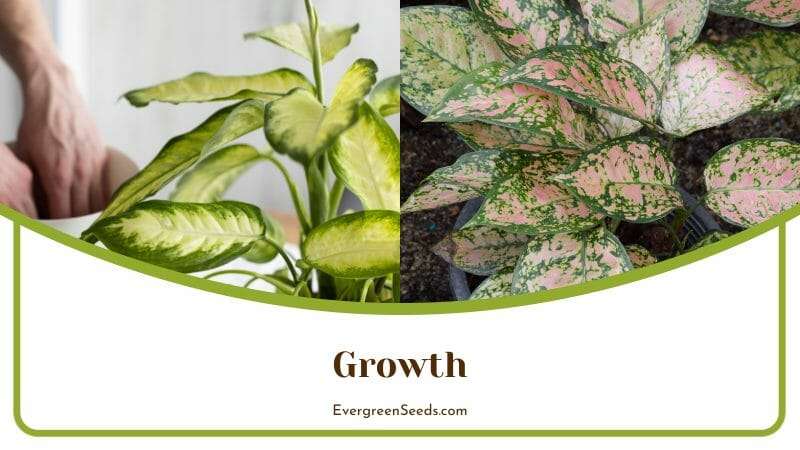
The dieffenbachia plant has a tree-like appearance due to its hard cane stems. They are taller and branch out in length and width.
– Light
Aglaonema is a favorite indoor plant due to its tolerance to low light. The plant easily grows even in a dingy room, so if you desire some green foliage in your indoor spaces, aglaonema will serve you just right.
On the other hand, dieffenbachia thrives in bright light but not direct sun. To encourage it to grow better, give it a turn every few days so that all sides get exposed to equal amounts of sunlight.
– Water
Aglaonema is a tough and hardy plant. If you are a beginner gardener then this plant will be a good choice to get started with. It can grow with minimal supervision requiring water just once or twice a week.
Dieffenbachia requires watering more frequently. The leaves begin to droop if adequate water is not received. They are not as hardy as the aglaonema thus require much more monitoring and supervision.
– Soil
Aglaonema requires soil that is loose, nitrogen-rich and acidic in nature. The slightly moist soil should be between 5.6 to 6.5 pH levels.
Dieffenbachia plant prefers a well-drained, consistently moist soil. The pH requirement is slightly higher, between 6.5 to 7.0.
– Care
Aglaonema is a light feeder and does not require additional nourishment. Fertilizers can be added once during spring and summer, which will be sufficient to take care of it through the season.
Dieffenbachia, on the other hand, requires heavier fertilizer use. Regularly using a liquid or water-soluble feed will complete its nutrition requirements. Schedule sprays every month, increasing it during the colder days of fall and winter.
– Propagation
You can propagate aglaonema with stem cuttings and not as much with roots. Place the freshly cut stem in water for around six weeks. In due time, you will notice fresh, tiny root sprouts erupting. Do remember to change the water once a week to keep the cutting nourished and fresh.
In comparison, the dieffenbachia can be propagated by root cuttings as well as stem cuttings.
Is Dieffenbachia an Aglaonema?
Dieffenbachia is not an aglaonema, though both plants belong to the same species Araceae. From their growth to their appearances, the differences are varied and noticeable. If there is one similarity between the two, it is that both are popular indoor plants due to their colorful tropical foliage.
Aglaonema Species Varieties
The aglaonema species can brighten up indoor spaces with its range of varieties and colors. Here is a list of commonly grown and preferred choices.
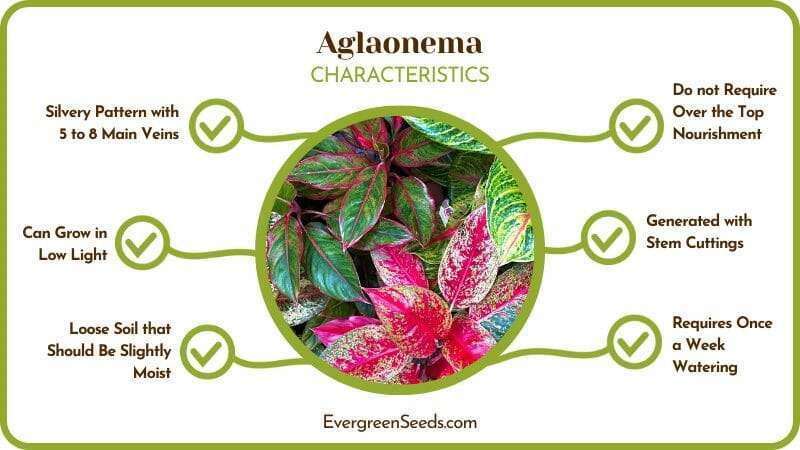
– Aglaonema Nitidum
This variety has deep dark green leaves. The plant is low in maintenance and can stay bushy even in extremely low light. This makes it a popular choice for dingy corners or office spaces.
– Aglaonema Widuri or the Red Peacock
This popular aglaonema has green leaves with striking pink veins. It adds a perfect dash of color to any space and can grow well even in low-light conditions.
– Aglaonema Cutlass
The variety has an interesting name due to its long streaked dagger-like leaves. The surface of the leaf is greenish-white and comes with a dark green central portion.
– Pictum Tricolor
This is a variety of aglaonema grown in a warm and humid environment. It is commonly known as the camouflage plant due to its characteristic tri-color streaks. The leaf has shades of light and dark green with white spots.
– Aglaonema Red Valentine
An easy-to-maintain plant, this variety comes with light pink foliage. It grows in dry soil and low light.
– Aglaonema Chocolate
This variety is attractive and will catch your eye with its dark green foliage and burgundy-colored venations.
– Aglaonema Silver Bay
This aglaonema variegated plant comes with lush foliage of pale silver-green to dark green leaves. The plant can be quite versatile in its size and are low-maintenance, best suited for workspace and office spaces.
– Aglaonema First Diamond
This variety is known for its stunning off-white foliage. The pattern includes dark green edges with light green stems. The plant will thrive well at higher temperatures with medium to bright light.
– Aglaonema Modestum
This chinese evergreen is a popular indoor plant due to its lush green variegated leaves. The plant grows well in indirect light with tolerance to shade as well.
– Aglaonema Suzy
This is very popular due to its pop of pink color in the leaves. The plant grows very well indoors. The central portion of the leaf has streaks of yellow, white or cream, and the veins display shades of dark red color.
Popular Dieffenbachia Varieties
There are various plants that look like dieffenbachia, however, what sets the dieffenbachia apart is its streaks of green, yellow or silver colors.
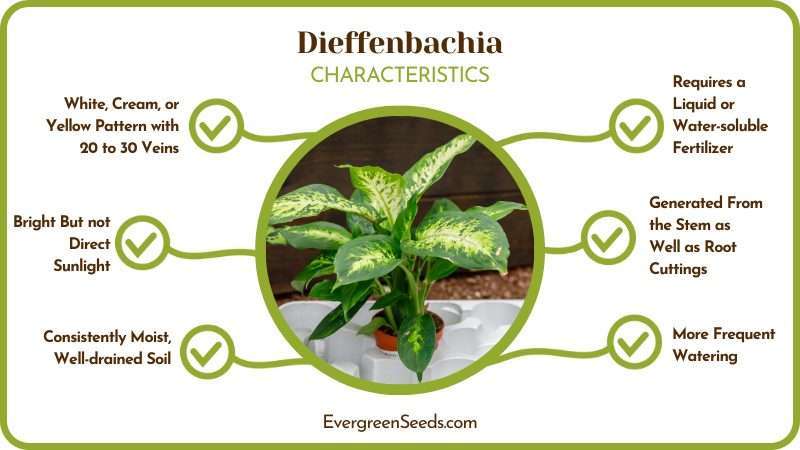
Read on for the most popular varieties preferred by plant lovers.
– Camille
The plant has broad leaves with dark green edges that grow well in full to partial shade.
– Dieffenbachia Camouflage
This variety comes with light green leaves and cream-colored veins. The plant prefers partial shade to grow to its fullest capacity.
– Dieffenbachia Maculata
An upright variety, dieffenbachia maculata can attain a height of up to seven feet. The leaves have green edges with cream blotches on the surface.
– Dieffenbachia Seguine
This dieffenbachia is a perfect ornamental plant, which makes it a favorite indoor choice. The plant has a cane-like stem with large white leaves that spread around its periphery.
– Carina
With medium-sized leaves, this variety can grow to a height of up to twenty inches. The leaves have a light green shade and are medium-sized.
– Compacta
A popular house plant, this variety is considered to purify closed spaces. The leaves are light green with a cream shade in the middle.
– Dieffenbachia “Delilah”
This variety of dieffenbachia comes with big pointy leaves. The edges of the leaves are green with white patches in the center.
– Dieffenbachia Honeydew
This variety has a unique shade of golden yellow with green borders. The foliage is very attractive and eye-catching due to this shade.
– Sparkle Dieffenbachia
Sparkle dieffenbachia comes with light green leaves with white patches on the surface. The plant may often be confused with the pothos as it grows to a height of up to four feet.


